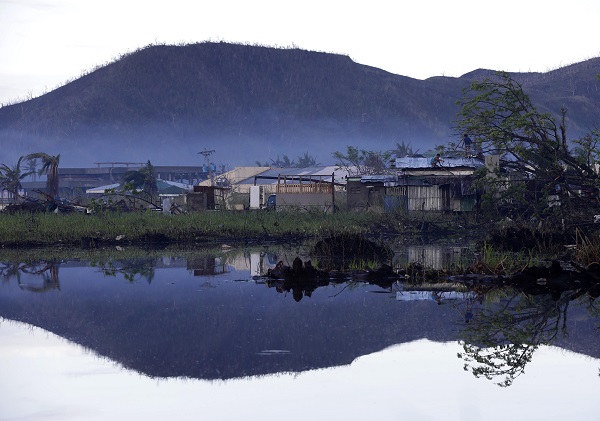Leyte coastal rehab to cost P350M

An early morning fog envelopes Palo town, Leyte province, as typhoon survivors rebuild their homes Wednesday, Nov. 27, 2013. The Department of Environment and Natural Resources has earmarked almost P350 million for the restoration of the “green wall” of mangrove and natural beach forests on the coasts of the Eastern Visayas that was the worst hit by Supertyphoon “Yolanda.” AP PHOTO/BULLIT MARQUEZ
MANILA, Philippines—The Department of Environment and Natural Resources (DENR) has earmarked almost P350 million for the restoration of the “green wall” of mangrove and natural beach forests on the coasts of the Eastern Visayas that was the worst hit by Supertyphoon “Yolanda.”
Environment Secretary Ramon Paje on Wednesday said the DENR would lead a massive coastal rehabilitation of the region, particularly Leyte and its capital city, Tacloban, and has set aside some P347 million for the program.
“Tacloban is a major concern given its being a major population center, but the undertaking will cover practically the entire eastern seaboard of Eastern Visayas,” Paje said.
The objective is to restore the region’s degraded coastal forests and to make its coastlines less vulnerable to extreme weather events.
“It is clear in the law that we cannot allow people to build houses in areas for mangroves and beach forest,” said Paje, referring to Presidential Decreee 1067, or the Philippine Water Code.
Article continues after this advertisementUnder Article 51 of that code, “banks of rivers and streams and the shores of the seas and lakes throughout their entire length and within a zone of three meters in urban areas, 20 meters in agricultural areas and 40 meters in forest areas, along their margins are subject to the easement of public use in the interest of recreation, navigation, floatage, fishing and salvage”.
Article continues after this advertisementPaje said the situation in Eastern Visayas “necessitates a display of political will from their local government officials to restore their mangrove areas and beach forests”.
He noted that the affected coastlines were once mangroves and beach forest areas but most had been converted into settlement areas by squatters or for development activities.
“Had the mangroves in Leyte and Eastern Samar not been decimated, the storm surge in those areas would have been dissipated by 70 to 80 percent of its strength,” Paje said.
He cited a study by the Department of Science and Technology indicating that the “strength of an eight-meter storm surge is concentrated within the lower six meters with the upper two meters as only having tidal currents.”
“The surge can only destroy the leaves, but it cannot uproot the mangroves because they are so deep-rooted and strong that they will regrow in time,” Paje said.